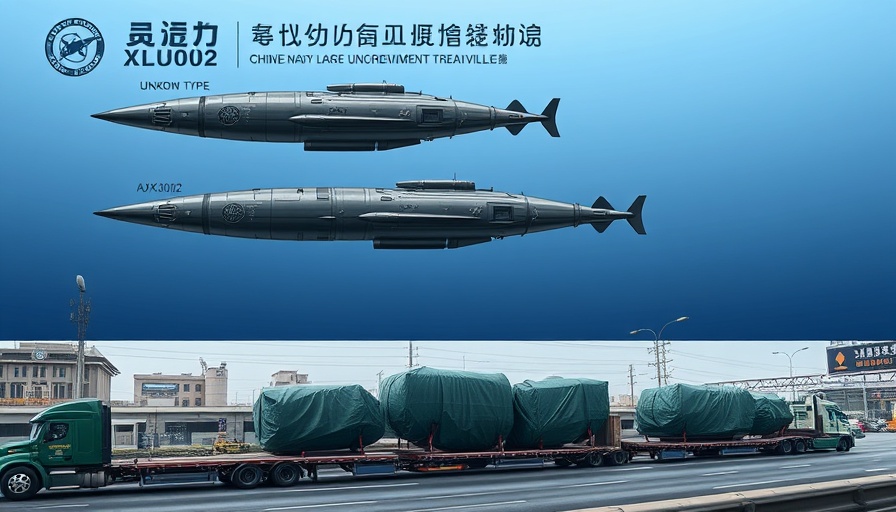
Revitalizing Naval Manufacturing with a $5 Billion Boost
The Defense Logistics Agency recently awarded a groundbreaking $5 billion contract aimed at enhancing ship manufacturing processes, a move hailed as essential for modernizing the U.S. Navy's capabilities. This contract, termed the Maritime Acquisition Advancement Contract (MAAC), is crafted to tackle the significant delays that the Navy faces in building and maintaining its fleet. With five optional years valued at $1 billion each, it has the potential to escalate to a staggering total of $10 billion.
Why This Contract Matters Now
The urgency behind the MAAC stems from a critical need to accelerate ship manufacturing. With assets like Virginia-class nuclear-powered submarines under construction, improving the speed of production is vital for maintaining operational readiness amidst increasing global naval challenges. "There are significantly long lead times the Navy faces ... this contracting vehicle streamlines and reduces our end of the administrative lead time," stated Elizabeth Allen, DLA Maritime Mechanicsburg’s deputy director. A faster production timeline is not just a logistical issue but a strategic necessity in an increasingly competitive military landscape.
What to Expect: Participating Companies and Their Roles
Six companies are set to play a pivotal role in this initiative. These include SupplyCore, Atlantic Diving Supply, Culmen International, ASRC Federal, Fairwinds Technologies, and S&K Aerospace, each tasked with the supply of components for various vessel types, from aircraft carriers to unmanned underwater vehicles. This diverse approach allows for broad coverage in terms of capabilities, ensuring that the Navy’s diverse needs are met efficiently. SupplyCore, for example, is responsible for supplying essential parts across a range of vessels, underscoring their commitment to the navy's operational readiness.
Innovative Approaches in Shipbuilding
With traditional shipbuilding facing pressure to modernize, the Navy is now incorporating advanced technologies such as Augmented Reality (AR) and 3D printing. The implementation of AR Maintenance Systems on five vessels stands as a testament to this push towards innovation. These systems facilitate real-time troubleshooting for technical difficulties encountered at sea, dramatically improving maintenance efficiency.
Additionally, the consideration of 3D printing as a production method reflects a growing awareness of how to adapt existing practices to embrace more agile, responsive manufacturing techniques. This shift not only promises to reduce lead times but also alters the economic landscape of shipbuilding by potentially lowering costs and improving supply chain management.
Looking Ahead: Implications for the Future of Naval Operations
This $5 billion contract marks a significant investment in the Navy's future, shedding light on the military's strategic pivot toward enhanced operational readiness and advanced manufacturing capabilities. The funding allocated for modernizing dry-dock facilities—averaging over 107 years old—highlights a commitment to long-term improvements, ensuring that U.S. naval power remains unrivaled on the world stage.
As the Navy continues to innovate with tools and technologies, this contract could serve as a model for future initiatives aimed at bolstering national defense. A potential increase in contract opportunities might inspire even more companies to enter the naval manufacturing realm, thus enhancing competition and innovation.
Conclusion: A Strategic Imperative for the Navy
In a world rife with evolving threats, the Navy’s ability to produce and maintain advanced vessels quickly is more critical than ever. The MAAC not only promises to shorten production times but also signifies a broader shift in military strategy that embraces technological advancements. As these changes unfold, they will likely have significant ramifications not only for the Navy but for national security as a whole.
This investment in shipbuilding exemplifies a strategic imperative that goes beyond procurement processes—it charts a course toward sustained naval dominance.
 Add Row
Add Row  Add
Add 




Write A Comment